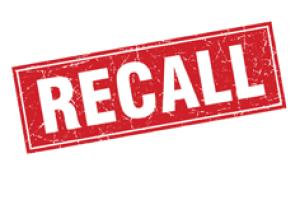GHS hazard communication training
Any company that has employees who work with or near chemicals is covered under the OSHA rule. If your workers apply, pour, mix, cut or grind any product or material, they are exposed to some sort of a chemical through a gas, vapor, fume, dust or mist.
What does this cover?
The OSHA rule has requirements for manufacturers as well as employers. The manufacturer must provide the information to the end user regarding the hazards that are associated with the product. Employers use this information to tell workers what the hazards are and how to protect themselves.
Written program — Each company must have a written program that describes how they will manage the products they use. The program must be at each work site and has to be available to all workers.
Product list — You must have a list of all the products your company uses or will use on a single job site. The list must have the product identifier, which will be on the Safety Data Sheet.
Safety Data Sheets — These are developed by the manufacturer and describe the hazards of the product, the method to use to protect workers and other information that is useful, such as how to store it. Virtually all products will have a Safety Data Sheet and you must have a Safety Data Sheet for all the products you make available for use by your workers.
Labels — Labels are also developed by the manufacturer and will be seen on cans, barrels, buckets and other containers. The label will be the first indicator regarding how the chemical might cause harm. A pictogram on the label will show the main hazard of using the chemical along with a signal word like “danger” or “warning” and a safety statement such as “Highly Flammable” or “May cause liver damage.”
What else do I need to know?
There has always been an OSHA rule to have a program for chemical hazards.
Until 2012 this used to be called “Hazard Communication” or “HazCom” but was changed to the “Globally Harmonized System of Classification and Labeling of Chemicals” (GHS). OSHA just calls it “HCS 2012” and is pretty much the same as the “old” hazard communication OSHA rule but provides better information to the end user of products.
What about training?
All workers must be trained on the products they use or might be exposed to. This includes training on products that other companies might use where they could be exposed to gases, vapors, fumes, dusts and mists. Training must include:
- Understanding the company’s written program
- The labeling system that is used
- Safety Data Sheets
- The hazards of the products use such as health related or physical related (fire, explosion)
- How workers can protect themselves (respirators, ventilation)
- What the product looks like or smells like in case of a spill or if testing equipment needs to be used to determine how much is present.
Where can I get more help?
The Hanover Risk Solutions website has additional information that you can review or use for worker training. Additional resources can also be found on the OSHA website and they even have a dedicated place just for Hazard Communication 2012.
This material is provided for informational purposes only and does not provide any coverage or guarantee loss prevention. The examples in this material are provided as hypothetical and for illustration purposes only. The Hanover Insurance Company and its affiliates and subsidiaries (“The Hanover”) specifically disclaim any warranty or representation that acceptance of any recommendations contained herein will make any premises, or operation safe or in compliance with any law or regulation. By providing this information to you, The Hanover does not assume (and specifically disclaims) any duty, undertaking or responsibility to you. The decision to accept or implement any recommendation(s) or advice contained in this material must be made by you.
LC JAN 2019 12-377
171-1100 (9/14)
Related resources
GHS hazard communication training
Any company that has employees who work with or near chemicals is covered under the OSHA rule. If your workers apply, pour, mix, cut or grind any product or material, they are exposed to some sort of a chemical through a gas, vapor, fume, dust or mist.
What does this cover?
The OSHA rule has requirements for manufacturers as well as employers. The manufacturer must provide the information to the end user regarding the hazards that are associated with the product. Employers use this information to tell workers what the hazards are and how to protect themselves.
Written program — Each company must have a written program that describes how they will manage the products they use. The program must be at each work site and has to be available to all workers.
Product list — You must have a list of all the products your company uses or will use on a single job site. The list must have the product identifier, which will be on the Safety Data Sheet.
Safety Data Sheets — These are developed by the manufacturer and describe the hazards of the product, the method to use to protect workers and other information that is useful, such as how to store it. Virtually all products will have a Safety Data Sheet and you must have a Safety Data Sheet for all the products you make available for use by your workers.
Labels — Labels are also developed by the manufacturer and will be seen on cans, barrels, buckets and other containers. The label will be the first indicator regarding how the chemical might cause harm. A pictogram on the label will show the main hazard of using the chemical along with a signal word like “danger” or “warning” and a safety statement such as “Highly Flammable” or “May cause liver damage.”
What else do I need to know?
There has always been an OSHA rule to have a program for chemical hazards.
Until 2012 this used to be called “Hazard Communication” or “HazCom” but was changed to the “Globally Harmonized System of Classification and Labeling of Chemicals” (GHS). OSHA just calls it “HCS 2012” and is pretty much the same as the “old” hazard communication OSHA rule but provides better information to the end user of products.
What about training?
All workers must be trained on the products they use or might be exposed to. This includes training on products that other companies might use where they could be exposed to gases, vapors, fumes, dusts and mists. Training must include:
- Understanding the company’s written program
- The labeling system that is used
- Safety Data Sheets
- The hazards of the products use such as health related or physical related (fire, explosion)
- How workers can protect themselves (respirators, ventilation)
- What the product looks like or smells like in case of a spill or if testing equipment needs to be used to determine how much is present.
Where can I get more help?
The Hanover Risk Solutions website has additional information that you can review or use for worker training. Additional resources can also be found on the OSHA website and they even have a dedicated place just for Hazard Communication 2012.
This material is provided for informational purposes only and does not provide any coverage or guarantee loss prevention. The examples in this material are provided as hypothetical and for illustration purposes only. The Hanover Insurance Company and its affiliates and subsidiaries (“The Hanover”) specifically disclaim any warranty or representation that acceptance of any recommendations contained herein will make any premises, or operation safe or in compliance with any law or regulation. By providing this information to you, The Hanover does not assume (and specifically disclaims) any duty, undertaking or responsibility to you. The decision to accept or implement any recommendation(s) or advice contained in this material must be made by you.
LC JAN 2019 12-377
171-1100 (9/14)
Related resources
GHS hazard communication training
Any company that has employees who work with or near chemicals is covered under the OSHA rule. If your workers apply, pour, mix, cut or grind any product or material, they are exposed to some sort of a chemical through a gas, vapor, fume, dust or mist.
What does this cover?
The OSHA rule has requirements for manufacturers as well as employers. The manufacturer must provide the information to the end user regarding the hazards that are associated with the product. Employers use this information to tell workers what the hazards are and how to protect themselves.
Written program — Each company must have a written program that describes how they will manage the products they use. The program must be at each work site and has to be available to all workers.
Product list — You must have a list of all the products your company uses or will use on a single job site. The list must have the product identifier, which will be on the Safety Data Sheet.
Safety Data Sheets — These are developed by the manufacturer and describe the hazards of the product, the method to use to protect workers and other information that is useful, such as how to store it. Virtually all products will have a Safety Data Sheet and you must have a Safety Data Sheet for all the products you make available for use by your workers.
Labels — Labels are also developed by the manufacturer and will be seen on cans, barrels, buckets and other containers. The label will be the first indicator regarding how the chemical might cause harm. A pictogram on the label will show the main hazard of using the chemical along with a signal word like “danger” or “warning” and a safety statement such as “Highly Flammable” or “May cause liver damage.”
What else do I need to know?
There has always been an OSHA rule to have a program for chemical hazards.
Until 2012 this used to be called “Hazard Communication” or “HazCom” but was changed to the “Globally Harmonized System of Classification and Labeling of Chemicals” (GHS). OSHA just calls it “HCS 2012” and is pretty much the same as the “old” hazard communication OSHA rule but provides better information to the end user of products.
What about training?
All workers must be trained on the products they use or might be exposed to. This includes training on products that other companies might use where they could be exposed to gases, vapors, fumes, dusts and mists. Training must include:
- Understanding the company’s written program
- The labeling system that is used
- Safety Data Sheets
- The hazards of the products use such as health related or physical related (fire, explosion)
- How workers can protect themselves (respirators, ventilation)
- What the product looks like or smells like in case of a spill or if testing equipment needs to be used to determine how much is present.
Where can I get more help?
The Hanover Risk Solutions website has additional information that you can review or use for worker training. Additional resources can also be found on the OSHA website and they even have a dedicated place just for Hazard Communication 2012.
This material is provided for informational purposes only and does not provide any coverage or guarantee loss prevention. The examples in this material are provided as hypothetical and for illustration purposes only. The Hanover Insurance Company and its affiliates and subsidiaries (“The Hanover”) specifically disclaim any warranty or representation that acceptance of any recommendations contained herein will make any premises, or operation safe or in compliance with any law or regulation. By providing this information to you, The Hanover does not assume (and specifically disclaims) any duty, undertaking or responsibility to you. The decision to accept or implement any recommendation(s) or advice contained in this material must be made by you.
LC JAN 2019 12-377
171-1100 (9/14)
Related resources
GHS hazard communication training
Any company that has employees who work with or near chemicals is covered under the OSHA rule. If your workers apply, pour, mix, cut or grind any product or material, they are exposed to some sort of a chemical through a gas, vapor, fume, dust or mist.
What does this cover?
The OSHA rule has requirements for manufacturers as well as employers. The manufacturer must provide the information to the end user regarding the hazards that are associated with the product. Employers use this information to tell workers what the hazards are and how to protect themselves.
Written program — Each company must have a written program that describes how they will manage the products they use. The program must be at each work site and has to be available to all workers.
Product list — You must have a list of all the products your company uses or will use on a single job site. The list must have the product identifier, which will be on the Safety Data Sheet.
Safety Data Sheets — These are developed by the manufacturer and describe the hazards of the product, the method to use to protect workers and other information that is useful, such as how to store it. Virtually all products will have a Safety Data Sheet and you must have a Safety Data Sheet for all the products you make available for use by your workers.
Labels — Labels are also developed by the manufacturer and will be seen on cans, barrels, buckets and other containers. The label will be the first indicator regarding how the chemical might cause harm. A pictogram on the label will show the main hazard of using the chemical along with a signal word like “danger” or “warning” and a safety statement such as “Highly Flammable” or “May cause liver damage.”
What else do I need to know?
There has always been an OSHA rule to have a program for chemical hazards.
Until 2012 this used to be called “Hazard Communication” or “HazCom” but was changed to the “Globally Harmonized System of Classification and Labeling of Chemicals” (GHS). OSHA just calls it “HCS 2012” and is pretty much the same as the “old” hazard communication OSHA rule but provides better information to the end user of products.
What about training?
All workers must be trained on the products they use or might be exposed to. This includes training on products that other companies might use where they could be exposed to gases, vapors, fumes, dusts and mists. Training must include:
- Understanding the company’s written program
- The labeling system that is used
- Safety Data Sheets
- The hazards of the products use such as health related or physical related (fire, explosion)
- How workers can protect themselves (respirators, ventilation)
- What the product looks like or smells like in case of a spill or if testing equipment needs to be used to determine how much is present.
Where can I get more help?
The Hanover Risk Solutions website has additional information that you can review or use for worker training. Additional resources can also be found on the OSHA website and they even have a dedicated place just for Hazard Communication 2012.
This material is provided for informational purposes only and does not provide any coverage or guarantee loss prevention. The examples in this material are provided as hypothetical and for illustration purposes only. The Hanover Insurance Company and its affiliates and subsidiaries (“The Hanover”) specifically disclaim any warranty or representation that acceptance of any recommendations contained herein will make any premises, or operation safe or in compliance with any law or regulation. By providing this information to you, The Hanover does not assume (and specifically disclaims) any duty, undertaking or responsibility to you. The decision to accept or implement any recommendation(s) or advice contained in this material must be made by you.
LC JAN 2019 12-377
171-1100 (9/14)





